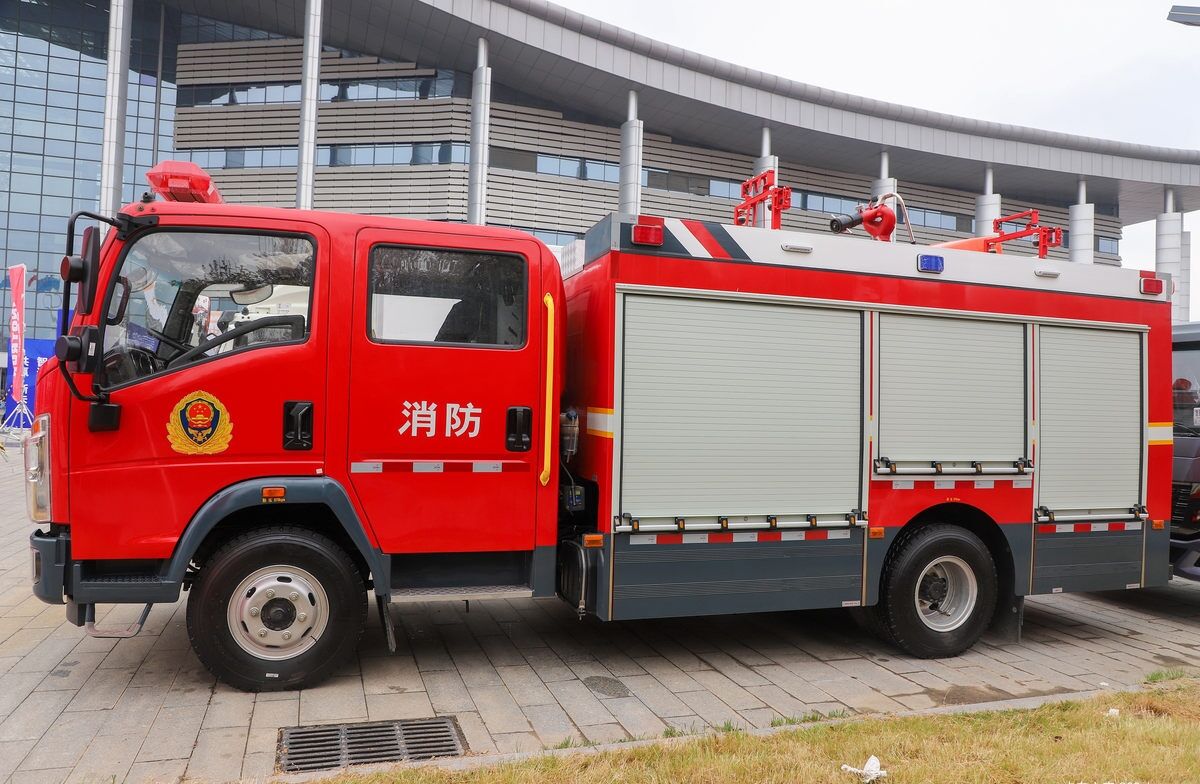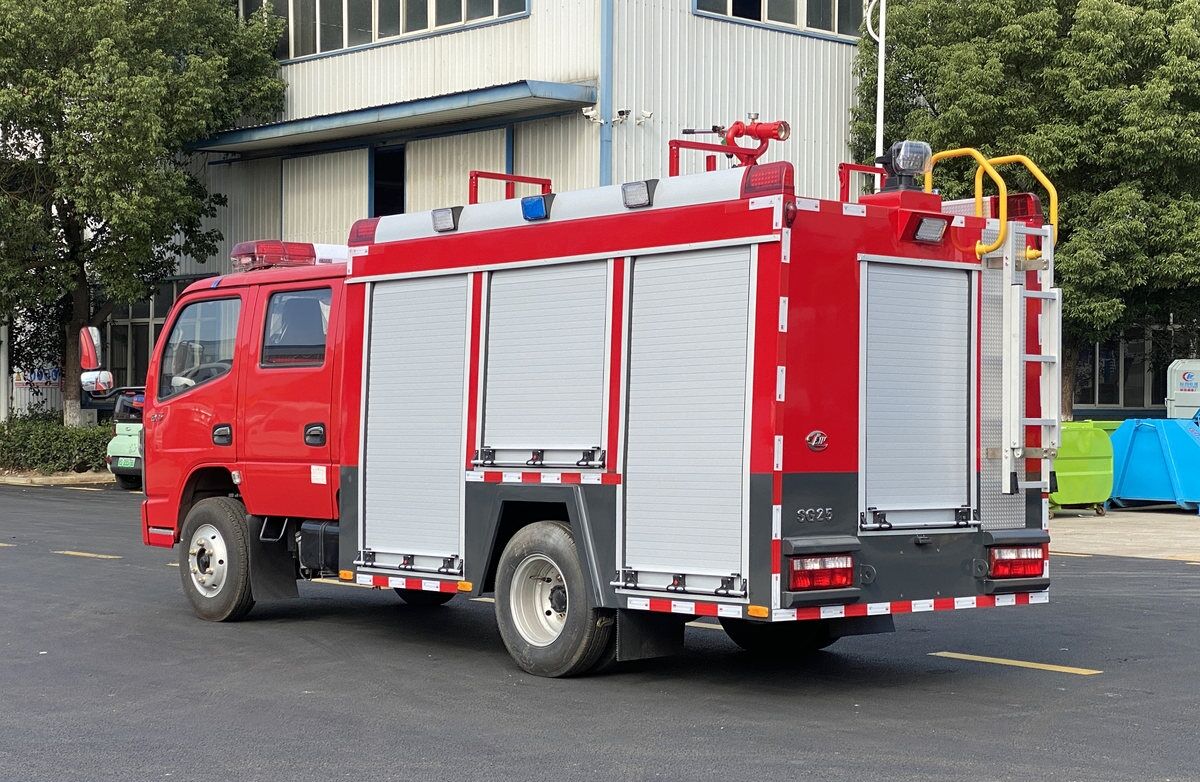Essential Role of Modern Fire Apparatus in City Protection
Fire trucks stand as powerful symbols of urban safety and emergency response, representing the front line of defense against various catastrophic situations in our cities. These sophisticated machines have evolved far beyond their original purpose of merely fighting fires, becoming versatile emergency response vehicles equipped with advanced technology and specialized tools. In today's complex urban environment, fire trucks serve as mobile command centers, rescue platforms, and life-saving resources that fire departments rely on 24/7.
The strategic deployment of fire trucks across urban areas has revolutionized emergency response capabilities, enabling faster reaction times and more efficient handling of diverse emergency situations. These vehicles not only carry essential firefighting equipment but also house sophisticated communication systems, medical supplies, and specialized rescue tools that make them indispensable in modern city safety operations.
Core Functions of Modern Fire Apparatus
Advanced Firefighting Capabilities
Modern fire trucks are engineered with state-of-the-art firefighting systems that significantly enhance their effectiveness in combating various types of fires. These vehicles carry massive water tanks, powerful pumps, and an array of specialized hoses that can deliver water and fire-suppressing foam at precise pressures and volumes. The advanced pump systems can draw water from hydrants, natural sources, or their own reserves, providing firefighters with crucial flexibility during operations.
Additionally, contemporary fire trucks feature sophisticated monitors and nozzles that can be controlled remotely, allowing firefighters to tackle blazes from safer positions. The integration of thermal imaging technology helps crews identify hotspots and track fire progression through smoke and darkness, making operations more precise and effective.
Technical Rescue Operations
Beyond firefighting, fire trucks carry specialized equipment for technical rescue operations. This includes hydraulic rescue tools, commonly known as the 'jaws of life,' which are crucial for extricating victims from vehicle accidents. The trucks also store equipment for rope rescues, confined space operations, and structural collapse scenarios, enabling firefighters to respond to a wide range of emergency situations.
Many modern fire trucks are equipped with advanced ladder systems and aerial platforms that can reach heights of over 100 feet, facilitating both firefighting and rescue operations in high-rise buildings. These aerial devices often include stabilization systems and computer-controlled movements for precise positioning during critical operations.

Emergency Medical Response Integration
First Responder Medical Equipment
Contemporary fire trucks serve as mobile medical response units, carrying essential emergency medical equipment and supplies. This includes automated external defibrillators (AEDs), oxygen delivery systems, trauma kits, and various other life-support equipment. Fire trucks often arrive first at medical emergencies, and their comprehensive medical capabilities can mean the difference between life and death in critical situations.
The integration of medical response capabilities has transformed fire trucks into versatile emergency response vehicles, enabling firefighters to provide immediate medical care while waiting for ambulance support. This dual-role capability has proven particularly valuable in urban areas with high call volumes and complex emergency scenarios.
Mass Casualty Incident Support
Fire trucks play a crucial role in mass casualty incidents, carrying equipment and supplies necessary for managing large-scale emergencies. These vehicles store multiple trauma kits, triage supplies, and mass casualty incident (MCI) management tools. The organizational systems built into modern fire trucks allow for rapid deployment of resources and efficient coordination during complex emergency scenarios.
The vehicles also serve as mobile command posts during major incidents, equipped with communication systems and technical resources to coordinate multiple responding agencies and track patient care in real-time. This capability is essential for managing large-scale emergencies effectively and ensuring optimal resource allocation.
Hazardous Materials Response
Specialized Equipment and Tools
Modern fire trucks carry sophisticated equipment for handling hazardous materials incidents. This includes detection devices for various chemical, biological, and radiological threats, as well as specialized protective equipment for firefighters. The vehicles are designed with compartments for storing decontamination equipment, containment tools, and various neutralizing agents necessary for managing hazardous spills and releases.
Advanced monitoring systems installed in these trucks help crews identify dangerous substances and determine appropriate response strategies. This technology, combined with specialized training, enables firefighters to handle complex hazardous materials incidents while maintaining safety for both responders and the public.
Environmental Protection Measures
Fire trucks are equipped with tools and systems designed to minimize environmental impact during emergency operations. This includes specialized containment equipment for chemical spills, absorption materials for fuel leaks, and tools for preventing contaminated runoff from entering water systems. The vehicles carry equipment for rapid deployment of containment barriers and environmental protection measures.
Modern fire apparatus also incorporate environmentally conscious features in their own design, such as clean-burning engines and efficient resource management systems. These features help reduce the environmental impact of emergency operations while maintaining effective response capabilities.
Urban Search and Rescue Applications
Structural Collapse Response
Fire trucks designed for urban search and rescue (USAR) operations carry specialized equipment for responding to building collapses and other structural emergencies. This includes tools for shoring operations, concrete cutting equipment, and various search and rescue devices. The vehicles serve as mobile tool caches and support platforms for complex rescue operations in urban environments.
Advanced search cameras, listening devices, and other technical search equipment stored on these trucks enable rescuers to locate victims in collapsed structures quickly and efficiently. The organization and accessibility of this equipment can significantly impact the success of rescue operations in time-critical situations.
Confined Space Rescue Capabilities
Modern fire trucks carry extensive equipment for confined space rescue operations, including air monitoring devices, ventilation systems, and specialized rescue equipment. These vehicles serve as support platforms for complex rescue operations in tunnels, sewers, and other confined spaces common in urban environments. The integrated air supply systems and communication equipment enable sustained operations in hazardous environments.
The strategic organization of confined space rescue equipment on fire trucks allows for rapid deployment and efficient operations. This capability is crucial in urban areas where industrial and construction activities create numerous confined space hazards.
Frequently Asked Questions
What is the average lifespan of a modern fire truck?
Modern fire trucks typically have an operational lifespan of 15-20 years when properly maintained. However, many departments begin transitioning these vehicles to reserve status after 10-12 years of front-line service to ensure optimal performance and reliability for primary response duties.
How much water can a typical fire truck carry?
The water capacity of fire trucks varies by type and design. Engine companies typically carry between 500-1,000 gallons of water, while some larger trucks can hold up to 1,500 gallons. Additionally, most trucks are equipped with foam tanks that hold 20-30 gallons of firefighting foam concentrate.
What special training is required to operate a fire truck?
Operating a fire truck requires specialized training beyond a commercial driver's license. Firefighters must complete extensive training in vehicle operations, pump operations, aerial device management, and emergency response driving. This training typically involves both classroom instruction and practical exercises, often taking several months to complete.

